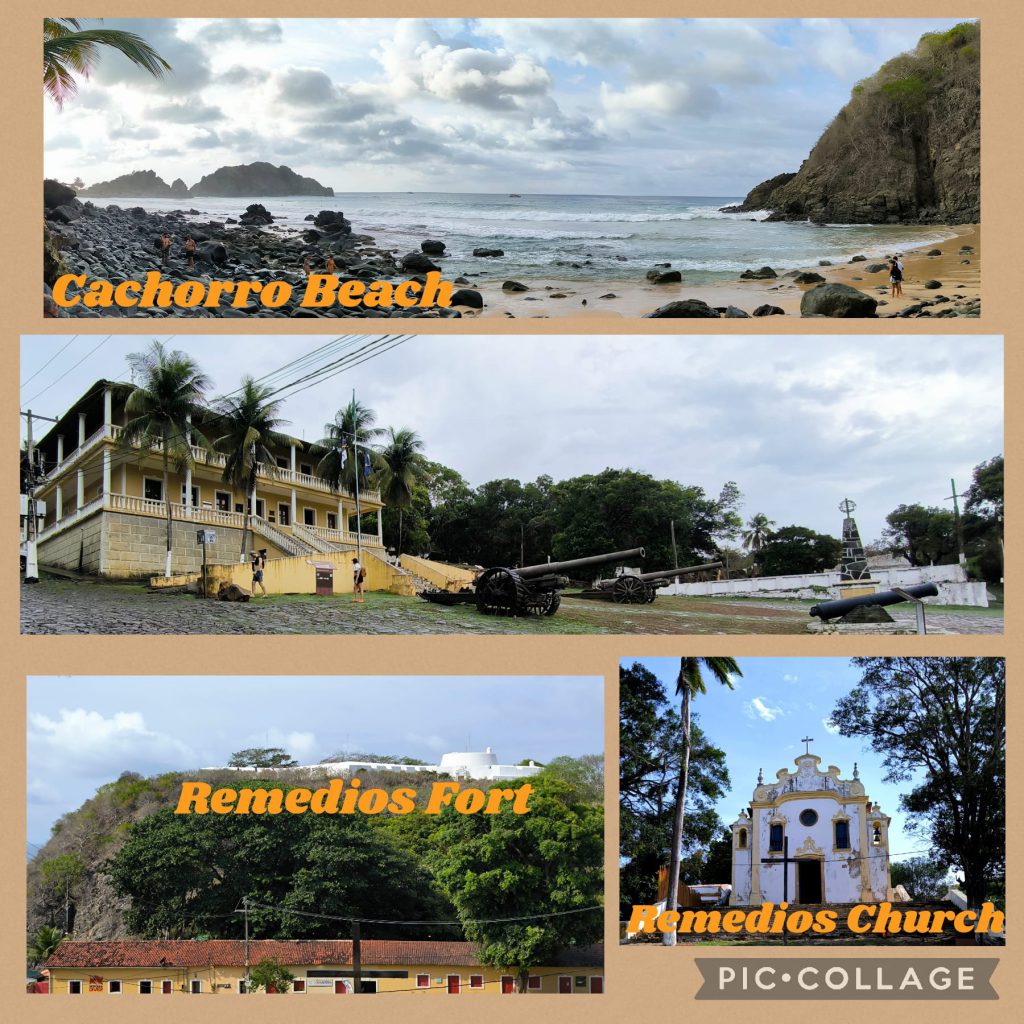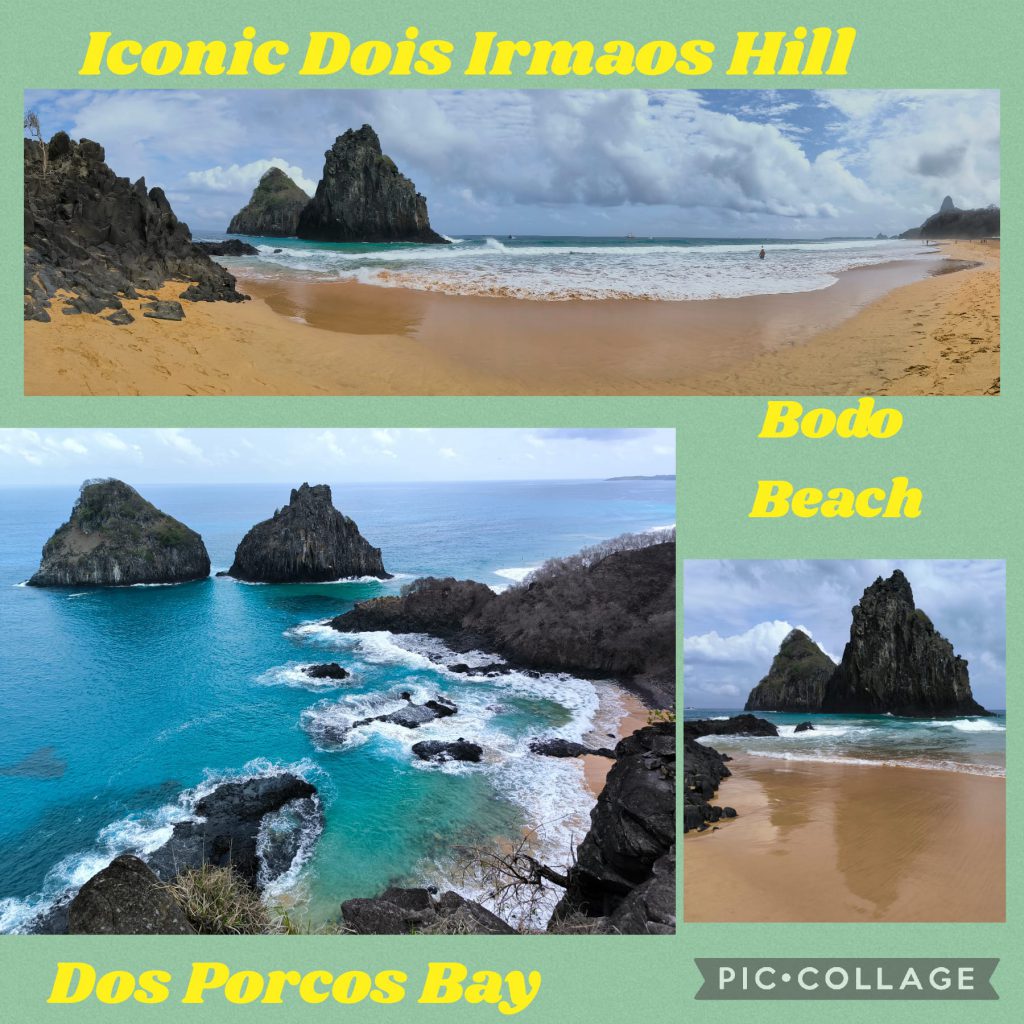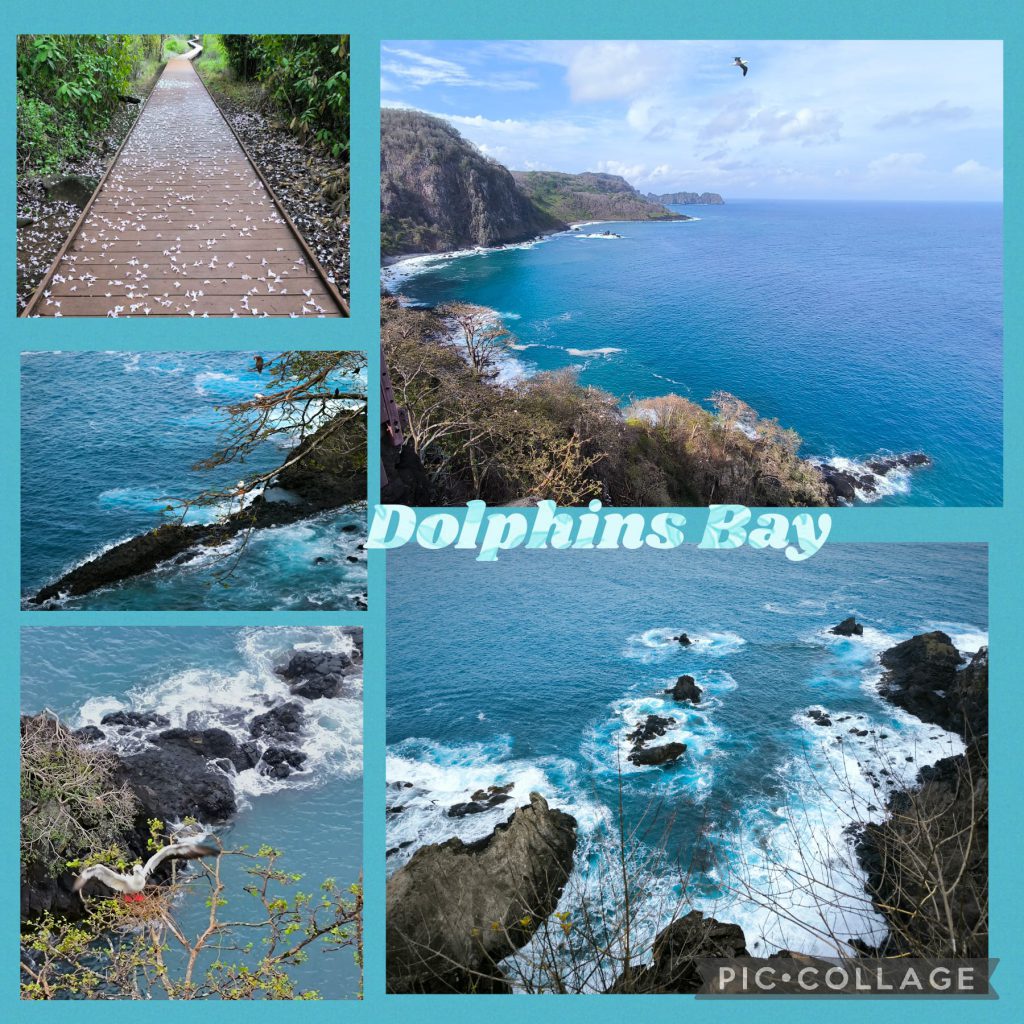I have not heard of Fernando de Noronha (some 350km off the Brazilian coast and 500km from Recife) before I planned this trip. I discover this archipelago, a World Heritage Site, has become a popular destination for the Brazilians. As the Azul air flies there, I have been able to visit this island with my air pass.
The relatively low-lying archipelago consisting of 21 islands and islets, extends over an area of 26 sq km with a population of over 3,000 in 2020. The main island is about 10km across and 7km long. In 2001, it was designated a World Heritage Site because of its importance as a feeding ground of tuna, sharks, turtles and marine mammals. With its protected status, the number of tourist arrival is limited to about 500 per day. Visitors are required to pay an “environmental tax” of about R97 a day. In addition, all foreign visitors have to pay R358 for a 10-day pass to visit the Marine National Park (though most visitors may spend 3-5 nights).
4 Nights in Noronha (16-23 February)
After a short flight of over an hour, I landed at the small airport. I paid the environmental tax for four days and R35 for a short ride to Casa de Mirtes. Mirtes, the host, is nice though we can’t communicate. She loves plants and the whole place looks like a mini-forest. But being allergic to mosquito and other insects, I dared not sit outdoor. Through Luiz’s help, I booked three trips including a one-day island tour, a morning canoe and a sunset boat trip, for R580.
On 16 February, I spent the afternoon exploring Remedios, the centre of the island, and the nearby beaches. There are several interesting historical buildings, canons, fortification and ruins of warehouses. The island was probably named after Fernao de Loronha who was a main financier of the expedition that discovered the island (but it was misspelt -“N” instead of “L”). Between 1501 and 1511, Loronha built a series of warehouses along the Brazilian coast. The ruins of a warehouse can still be seen. Given my hip problem, I did not walk up to the imposing white fort. Everything is expensive: I paid over R200 for lunch and a beer in a nice restaurant opposite the Palace.
On 17 February, I had a great island trip. Instead of seating at the back of the truck, I was given a seat next to the driver / guide, N who is a nice strong lady. She laughs all the time. Though we can’t talk, we form a natural bondage! We first stopped at the Bodo Beach when the group walked up a view point to look at the iconic Two Brothers Rocks. I played safe and sat on the beach. The next stop is the Sancho Beach with several view points, one of which is to admire the Two Brothers Rocks. Then we had a thrilling time when before climbing down a vertical staircase with 22 steps to the beach. I managed to get down and climb up the staircase without mishaps!
Next on the itinerary was the Leaos Beach to see a lion and a turtle rock and the coral reefs close to the shore. But no snorkeling is allowed. We visited the Sueste Beach nearby which is a turtle reserve: no activity is allowed. After a nice lunch, we went to the St Antonio Port for snorkeling. The water was not clear: I hardly saw anything though other saw turtles and baby sharks. Finally we spent over an hour to watch sunset with the sun dropping between the Two Brothers Rocks. I had a most enjoyable day!
On 18 February, I was picked up at 8am and spent an hour and a half canoeing from the port. Here, two canoes with six seats each were tied together: I felt very safe and could canoe without efforts (others were doing the job for me!) We watched many spinner dolphins close to the port for half an hour before moving to the cliffs below the fort which produce some extraordinary loud noises that resemble lion roars. Incredible!. Then we stayed in a small bay next to the port. I jumped into the water with my snorkel gear and saw my first shark (tubarao-lixa) of this trip.
As I had joined a sunset boat trip at 4:30 pm, I did not return to the guesthouse. Instead, I snorkeled for an hour in the beach next to the port. Today, the water was clear and I saw three turtles, some baby sharks and lots of fish for an hour. Unfortunately, I had not bought the underwater camera with me
At 4:30pm, I got onboard a boat with some 50 passengers. It was a boring ride for three reasons. First, the weather was unstable and windy: it became cloudy and rained later. Hence, there was no sunset and we could not go to Sancho Beach for a swim. Second, there was nothing to do on the boat. The seats are uncomfortable and limited. There was not much space to move around. Third, the Brazilians love loud music. I had no peace on the boat.
I had a free day on 19 February (I should have taken the morning boat trip that would go as far as the Marine National Park i.e. the Dolphins Bay). I met Laura and Nathan from Switzerland in the guesthouse. They planned to go to the Dolphins Bay to watch the spinner dolphins and the Sancho Bay to swim. They invited me to join them. I gladly accepted and we set off before 7 am. The taxi cost R40. It is a short walk (1km) to the lookout point of the Marine National Park. A ranger was there and he was not optimistic about the chance of seeing the dolphins. Luckily a school of some 30 dolphins arrived before 8am. They feed at night and spend the day time socialising and relaxing. There were few visitors and I watched the dolphins, the water and the birds for over an hour. Very peaceful and soothing.
Then I followed a well-maintained path (1.1km) to the Sancho Bay. There are several excellent viewing platforms where I sat for 15-20 minutes each to watch birds – frigate, eared dove, black noddy, white-tailed tropicbird, white tern, red-footed booby, Noronha Elaenia and vireo (both endemic species) etc. I also saw plenty of lizard, crabs and rats. By the time I reached the Sancho Bay, Laura and Nathan also had their swim and climbed up the staircase. Without pre-arrangement, we met up and took a taxi back to the guesthouse.
After a rest, I set off to the port for another snorkel with a camera. I took the bus that cost me R5 each way. Unfortunately, it was windy with swell. It was impossible to snorkel: I was thrown off thrice somersaulting by the waves. A nice strong man came to my rescue and pulled me out of the water though I was less than two feet from the shore. I now fully realise how dangerous and ferocious waves can be.
I had a lift from Mirte’s husband to the airport at 9am on 20 February. The flight departed on schedule after 11am and I arrived in Salvador, my last stop in Brazil via Recife around 2:30 pm. I took Uber to Pousada Colonial Chile in the historic centre of Salvador.














